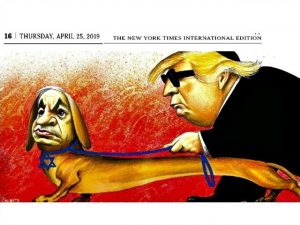By James F. Tracy
Global Research, May 01, 2014
Major US news outlets turn a blind eye to a wide array of evidence “that Western covert operators were behind” events such as “Bali, Madrid, London 7/7, mosque bombings in Iraq and elsewhere and, of course, 9/11. Because the mainstream media are integral to the Industrial Military Academic Intelligence Media complex,” journalist Barrie Zwicker observes, “the cold-blooded technicians of death face no journalistic scrutiny. Without moral, legal, technical or financial constraints, the black operators range freely, executing the orders of the global oligarchies.”[1]
An undeniable effect of the Boston Marathon bombing was that the term “false flag”—meaning a typically illegal act carried out by a government against itself that is often blamed on another entity to justify its own policies—became a recognizable expression among a broader swath of the American public. For example, web-based searches for the phrase spiked in the wake of the April 15 event after a correspondent for the alternative news site Infowars questioned Massachusetts Governor Duval Patrick on the suspicious circumstances surrounding the bombing.[2] Some news outlets predictably moved to condemn any cogitation along these lines as “conspiracy theorizing.”[3]
In the United States the citizenry is especially well-indoctrinated through an overwhelming dependence on such corporate media. Yet for the peoples of many countries “false flag” has become a commonplace term. This is particularly so in the Middle East, where journalists and the broader public routinely witness inexplicable terror attacks on civilian populations. Placed in a broader historical context there is a concurrent understanding of such tactics as emblematic of military and intelligence-related meddling from Western nations.
For example, in the early 2000s waves of car bombings throughout Iraq were rumored to have been carried out by British or US intelligence. “The word on the street in Baghdad is that the cessation of suicide car bombings is proof that the CIA was behind them,” independent journalist Dahr Jamail wrote in 2004. “Why? Because as one man states, ‘[CIA agents are] too busy fighting now, and the unrest they wanted to cause by the bombings is now upon them.’ True or not, it doesn’t bode well for the occupiers’ image in Iraq.”[4]
Along these lines, in September 2005 Iraqi police arrested two British soldiers disguised in conventional Iraqi jallabahs [loose cloaks] and Arab headscarves after the costumed pair reportedly drove a car equipped with explosives while opening fire on Iraqi police. British armed forces then used several tanks and helicopters to liberate the masquerading combatants from the police barracks where they were detained.[5]
Similar to NATO’s Operation Gladio, or the FBI’s more recent efforts at generating newsworthy terrorist incidents in the US,[6] such black operations designed to cultivate terrorism were in fact authorized by the United States in 2002 to further perpetuate its “war on terror.” At that time military officials established the “Proactive, Preemptive Operations Group (P2OG).” P2OG’s overall strategy combined “CIA and military covert action, information warfare, intelligence and cover and deception” to execute terrorist acts on civilian populations in order to provoke and respond to such consequent indigenous terrorism.[7] In other words, this was an elaborate and deadly “make work” program by and for the military and intelligence communities.
With the above in mind, it is perhaps little wonder that “false flag” has become a standard term in the discourse of non-Western and especially Middle Eastern news outlets. Conversely, the expression is either absent from US-based news media, or carefully neutralized in editorial commentary and lighter entertainment or lifestyle-related coverage.
LexisNexis news searches for the dates April 15, 2004 to April 15, 2014 yields 1,012 newspaper items and more than 100 broadcast transcripts where “false flag” is used in the headline or text. An overwhelming majority of references appear in Pakistani and Iranian newspaper coverage and commentary, where the term is almost uniformly intended to denote instances of terrorist violence.
BBC Monitoring International Reports–52
Press TV (Iran)–51
Pakistan Observer–42
The Frontier Post (Pakistan)–28
The Nation (Thailand)–24
The Washington Post–20
Mail Online–19
The New York Times–18
McClatchey Tribune Syndicate–17
International New York Times–16
Mehr News Agency (Iran)–15
National Post (Canada)–15
The Washington Times–15
Daily News (Sri Lanka)–14
The Jerusalem Post–14
Daily Times (Pakistan)–13
Gold Coast Publications (Australia)–13
Sunday Times (Islamabad)–13
The Augusta Chronicle–12
FARS News Agency (Iran)–11
The Times (London)–10
The Guardian (London)–10
























